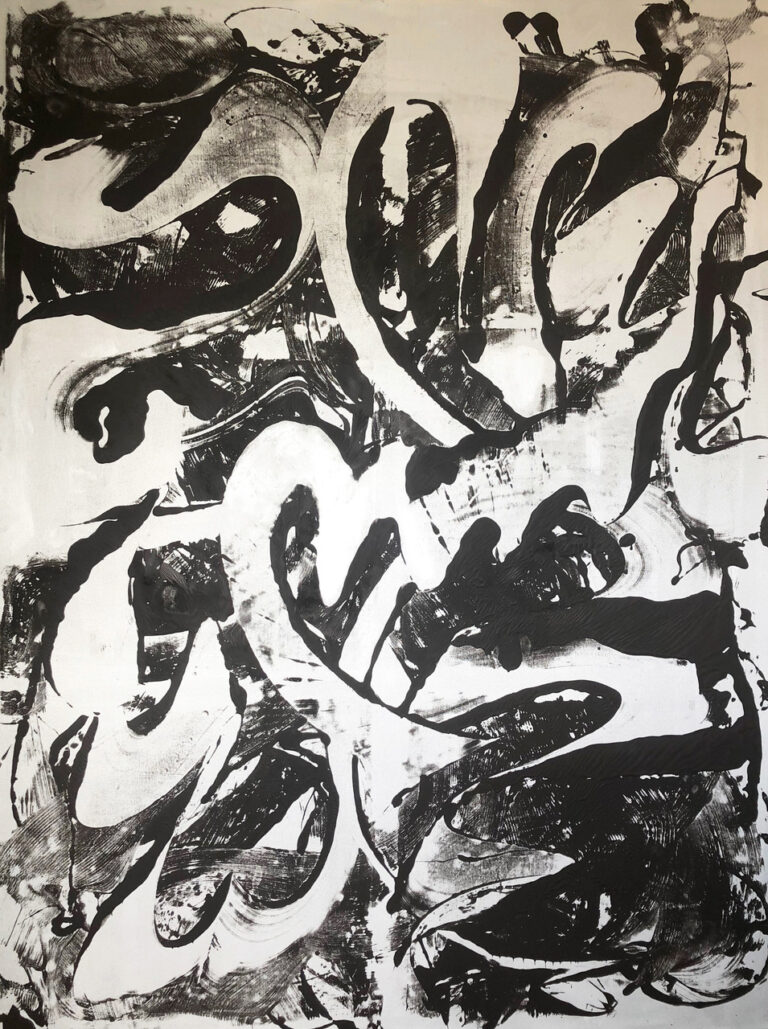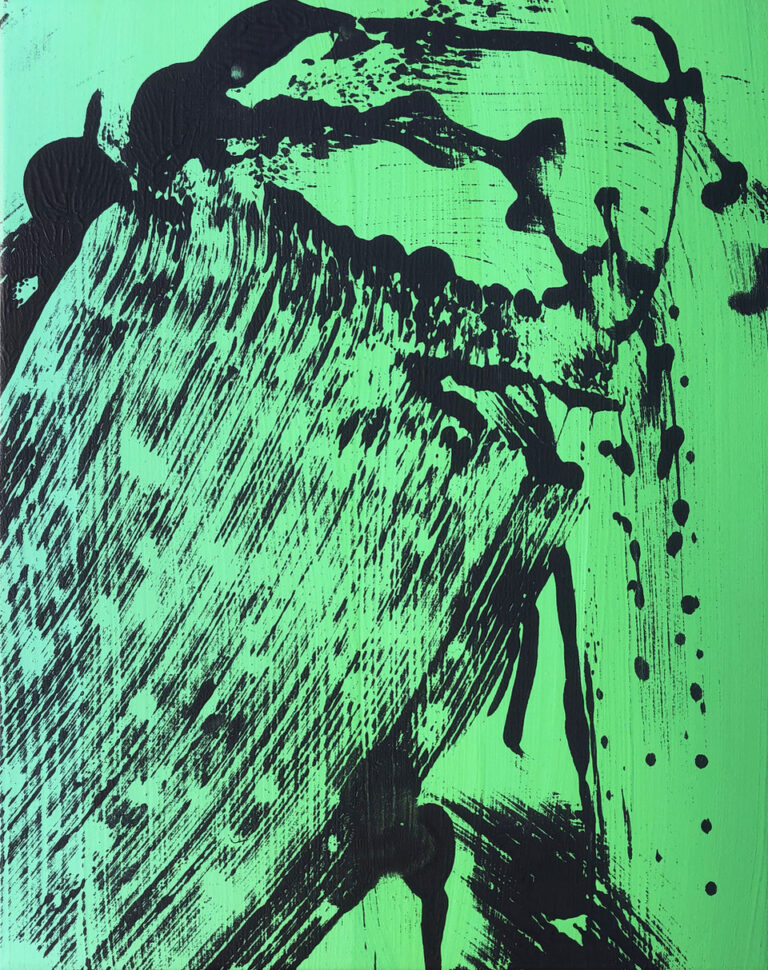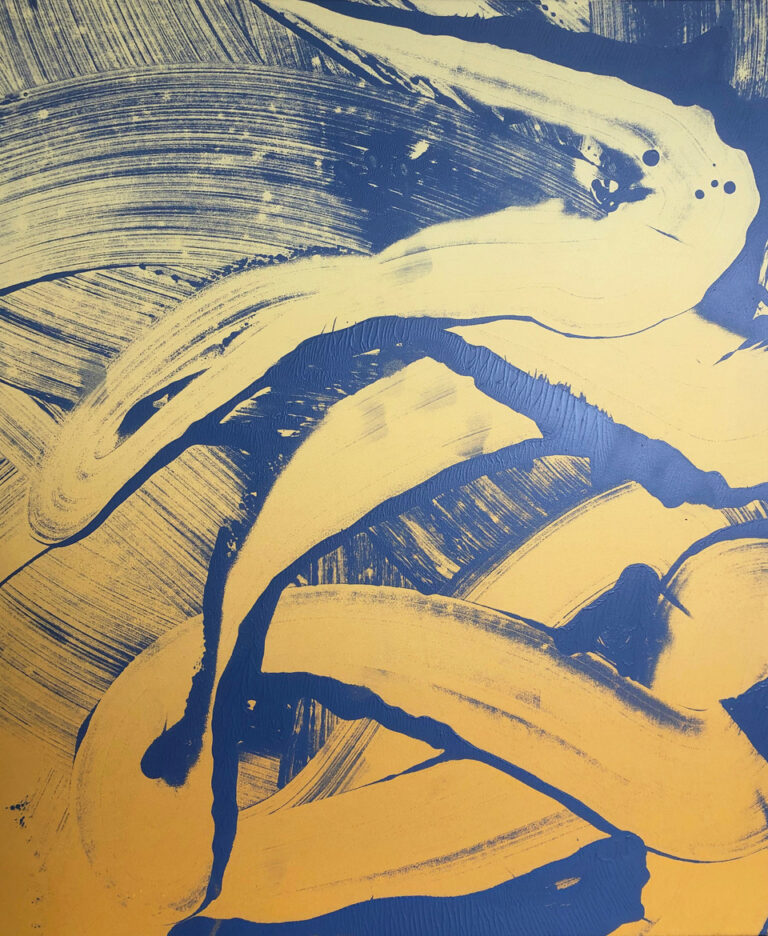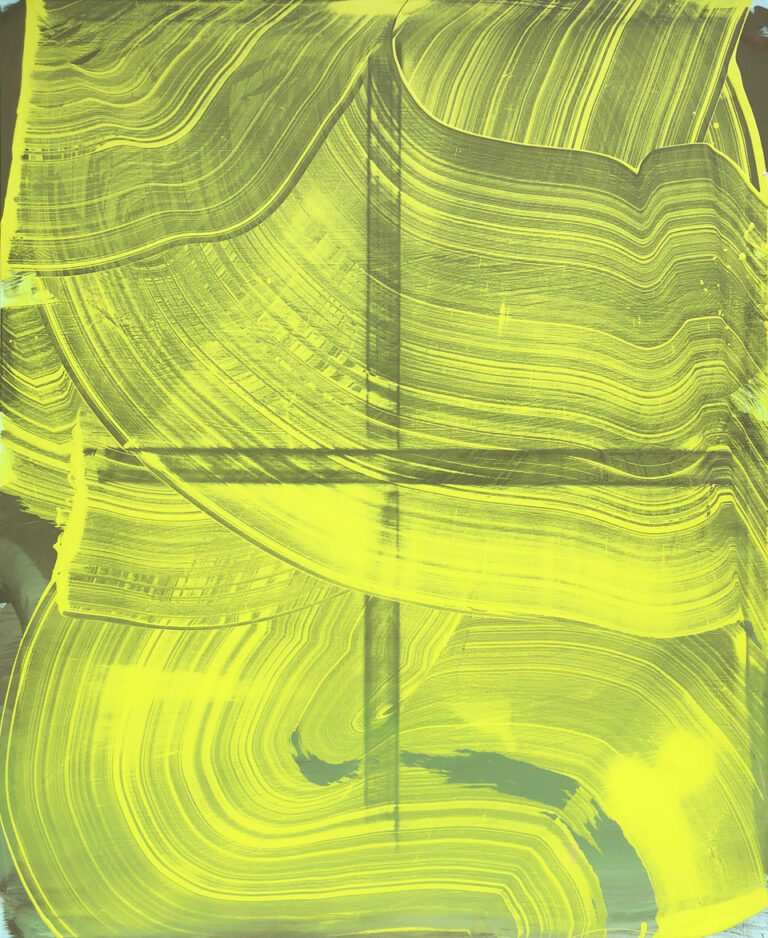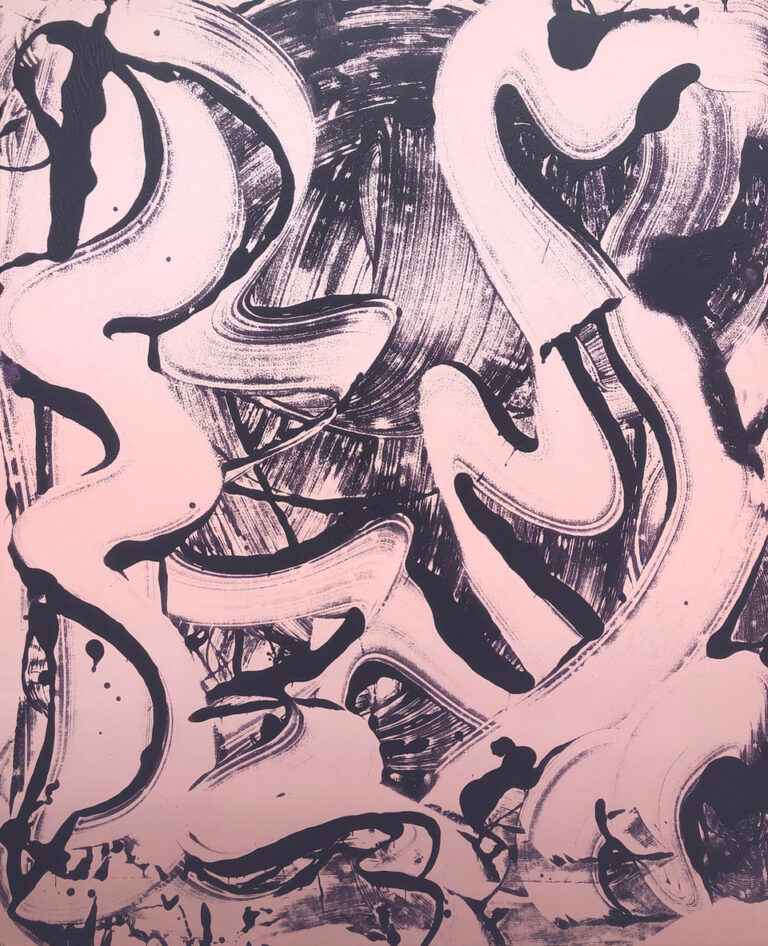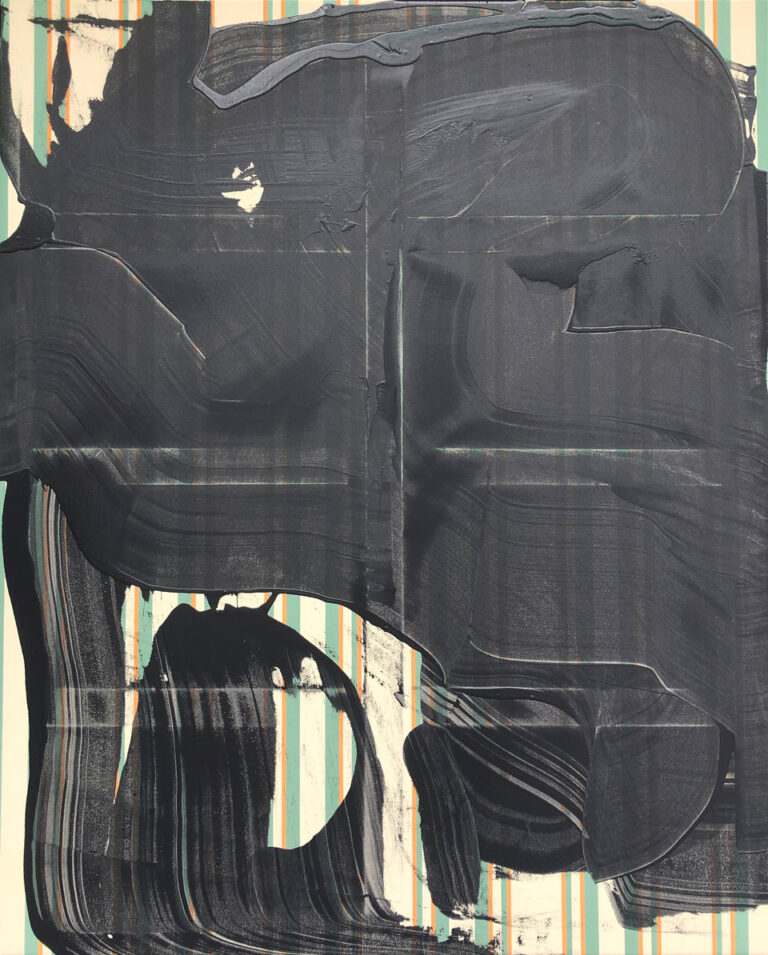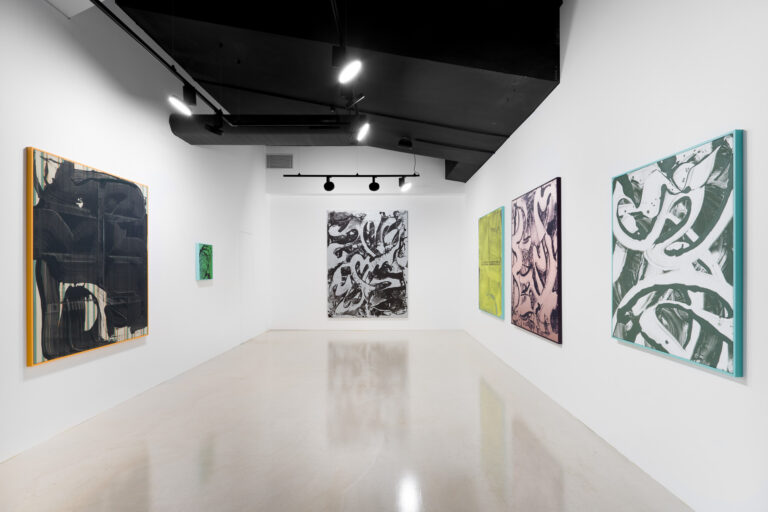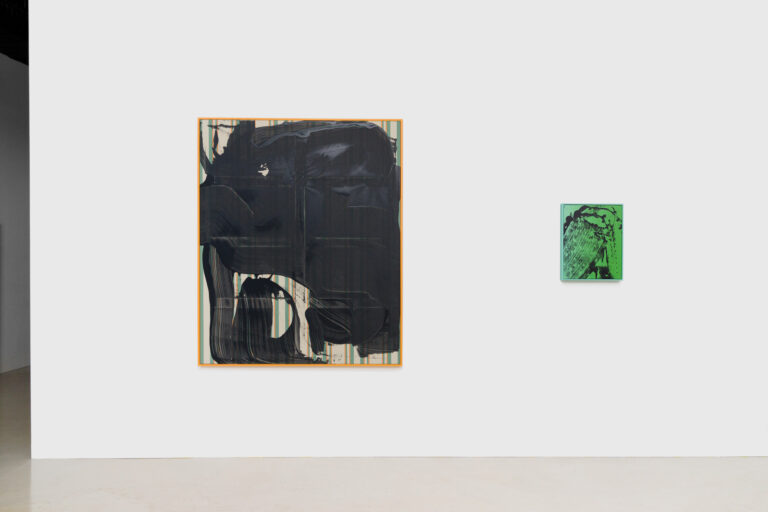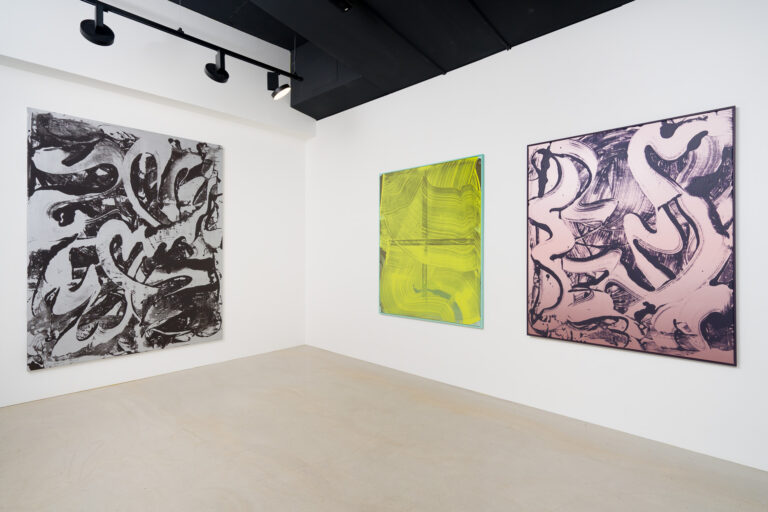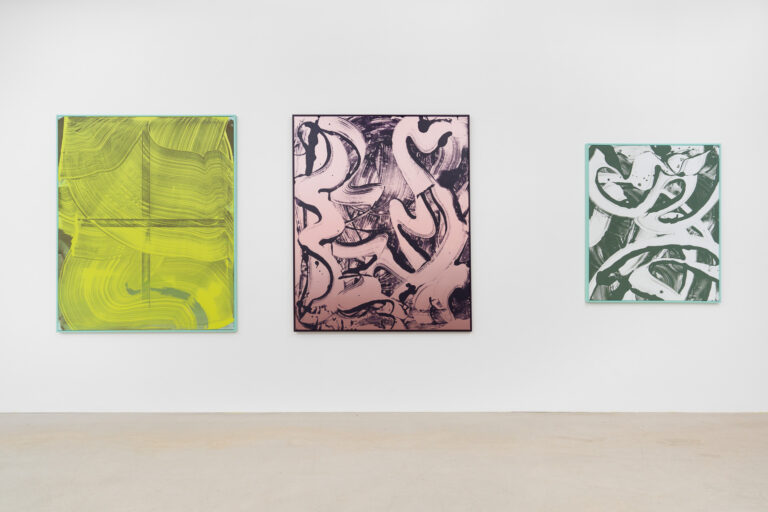
Artworks
Installations
Seven works occupy the gallery, each stand alone like portraits of saints on stained glass, each with their own narrative, conclusion, morality and analogy – presented together they represent a whole, a larger sense of world order. Mistints is the church for magical thinking, the casualty of ritual, sacrifice and taboo.
Order can be found in balance – here, we see a disruption of conventional binaries, there is no antithesis, instead, an off centred relation to one another; their materiality wavering between the printed and the painted, their tactility gestural and structured, their pace urgent and arbitrary – we are left with a sense of contemplation and chance, illusion and perfect reproduction.
The esteemed hand of the artist is sacrificed, acquiescing authorship to the materiality, her use of rejected paints, rudimentary technologies and domestic instruments as tools of application, undermining the notion of ‘objet d’art.’ When considering concepts of low and high art one thinks of taste; intelligence as kind of taste, a taste of ideas – and when speaking of taste we question the taste of actions, of morality, people, visual and emotional. What then becomes taboo? Is it purely a matter of taste?
Linney’s ritual emphasis on gesture, texture and colour transform her works from their literal depictions into their representations; they become an extension of sensibilities, figureheads of greater concepts – from a painting to a ‘painting,’ they simultaneously role-play and are the true, real and authentic. In this, Linney acts as martyr, her belief in the ordinary, elevating non-art objects and practices to the realm of philosophical contemplation – leading to her death as the artist, an anonymity of the auteur.
As a child, Linney played Dorothy in a travelling show of the Wizard of Oz, her journey from Kansas to the Emerald City, a passage through banality into fantasy, her pilgrimage to salvation. Oz, as technology, as illusion – Linney like Toto, draws the curtain back in revelation. We are then presented with a paradox – the outing of technology, each generations’ inevitable fate of becoming usefully obsolete, but in using technology Linney eternalises it, raising it to the status of fine art.
Gabriella Lo Presti, 2022

